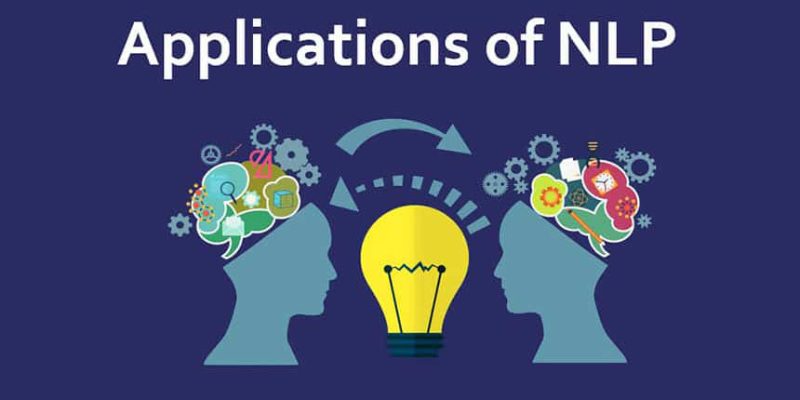Yes, Alexa is an example of Natural Language Processing (NLP), a field of Artificial Intelligence (AI) that focuses on the interaction between computers and humans using natural language.
Alexa, being an AI-powered virtual assistant, uses NLP algorithms to understand and process user requests and provide relevant responses.
In this blog, we will dive deeper into how NLP powers Alexa and helps it perform its functions.
What is Natural Language Processing (NLP)?
Natural Language Processing (NLP) is a subfield of AI that deals with the interaction between computers and humans using natural language.
NLP aims to make computers understand, interpret, and generate human language, making communication between humans and computers more natural and intuitive.
NLP has come a long way since its inception and has become a crucial component of various AI applications, including chatbots, voice assistants, sentiment analysis, and machine translation.
The use of NLP in Alexa has been a game-changer, and the future of NLP-powered virtual assistants looks very promising. If you’re interested in developing NLP-powered applications, now is the time to start exploring the possibilities and hire NLP developers.
How NLP Powers Alexa
Alexa is a virtual assistant powered by NLP algorithms that enable it to understand and process user requests and provide relevant responses.
Here is a brief overview of how NLP powers Alexa:
- Speech Recognition: The first step in NLP-powered Alexa is to convert the user’s speech into text. Alexa uses automatic speech recognition (ASR) technology to transcribe the user’s voice into text, which it then processes to determine the user’s request.
- Intent Recognition: The next step is to determine the user’s intent behind their request. Alexa uses NLP algorithms to analyze the transcribed text and determine the user’s intention, such as asking for a weather update, setting a reminder, or playing music.
- Contextual Understanding: Alexa also considers the context of the user’s request to provide relevant and accurate responses. For example, if a user asks for the weather, Alexa will consider the user’s location and provide specific weather information.
- Natural Language Generation: Once Alexa has determined the user’s intent, it uses NLP algorithms to generate an appropriate response in natural language. Alexa’s response is not just pre-written but is generated in real-time using NLP algorithms.
Benefits of NLP in Alexa
NLP plays a crucial role in making Alexa an effective virtual assistant.
Some of the benefits of NLP in Alexa are:
- Improved User Experience: NLP algorithms help Alexa understand and process user requests and provide relevant responses, thereby improving the user experience. With NLP, Alexa can understand and respond to a wide range of requests and queries, making it more user-friendly.
- Increased Accuracy: NLP algorithms help Alexa respond more accurately to user requests. By analyzing the context of the request and determining the user’s intent, Alexa can provide more relevant and accurate responses.
- Natural Language Interaction: NLP algorithms enable Alexa to interact with users using natural language, making the interaction more natural and intuitive. This makes it easier for users to communicate with Alexa, reducing the learning curve and making it accessible to a wider range of users.
- Personalization: NLP algorithms help Alexa personalize its responses based on the user’s preferences, history, and location. This personalization enhances the user experience, making it more tailored to the individual user’s needs.
- Multi-language Support: NLP algorithms allow Alexa to support multiple languages, making it accessible to a wider range of users. This feature also enables Alexa to understand and respond to requests in multiple languages, making it easier for users who may need to be fluent in a common language.
- Improved Voice Recognition: NLP algorithms also help Alexa improve its speech recognition capabilities. With NLP, Alexa can better distinguish between different accents, dialects, and speaking styles, making it easier for users to communicate with Alexa, regardless of their speaking style.
- Robust Error Handling: NLP algorithms allow Alexa to handle errors and misunderstandings more effectively. By analyzing the context of the request and the user’s intent, Alexa can detect when it has misunderstood a request and respond with more relevant information.
- Integration with Other Services: NLP algorithms also allow Alexa to integrate with other services and devices, such as smart home devices, music streaming services, and more. This integration enhances the functionality of Alexa, making it a more comprehensive virtual assistant.
In addition to these benefits, using NLP in Alexa also opens up new opportunities for innovation and development. As NLP continues to evolve, we can expect Alexa to become even more advanced, offering even more seamless and effective communication between humans and computers.
In conclusion, using NLP in Alexa has been instrumental in making it an effective virtual assistant. With NLP, Alexa has improved the user experience, increased accuracy, and made the interaction between humans and computers more natural and intuitive.
NLP algorithms will continue to drive the development of virtual assistants like Alexa, making them even more advanced and effective in the future.
As NLP continues to evolve, we can expect virtual assistants like Alexa to become even more advanced, offering more seamless and effective communication between humans and computers.
As NLP continues to evolve, the demand for NLP developers who can build and integrate NLP algorithms into virtual assistants like Alexa will only continue to grow.
Companies looking to hire NLP developers can find skilled professionals who can bring NLP expertise to their projects and help them build more advanced and effective virtual assistants.
Read More: What is Solr used for?










Comments